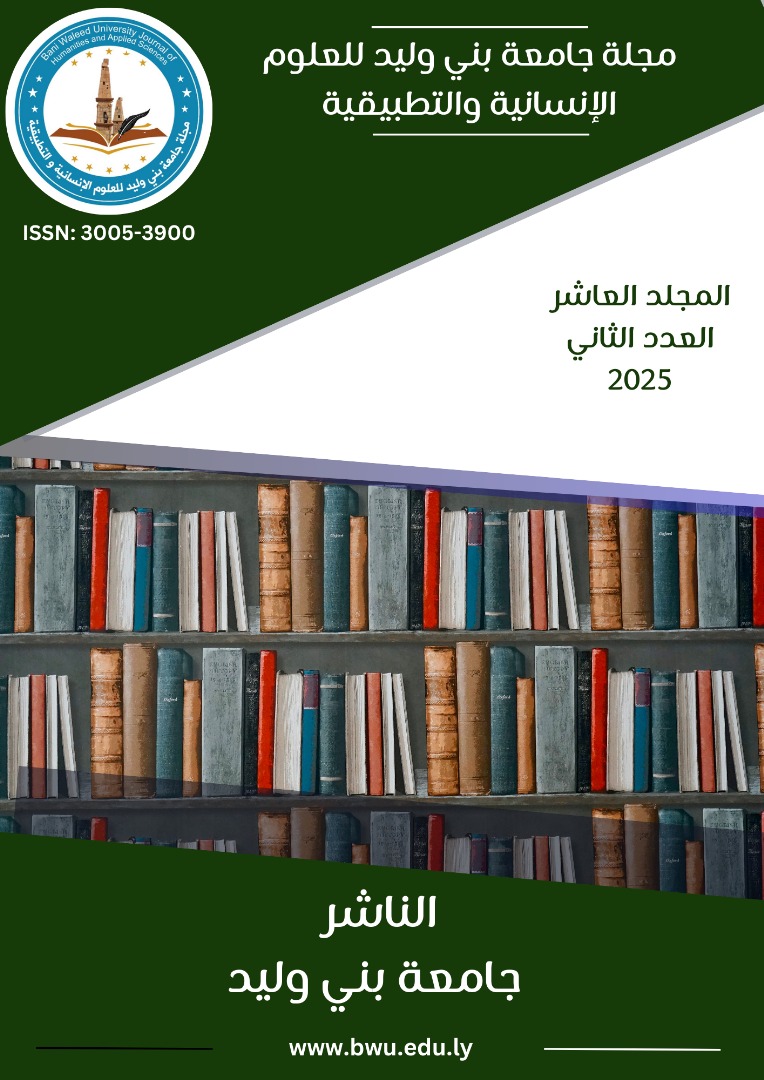Applying the Vector Error Correction Model (VECM) to Measure the Impact of Changes in the Exchange Rate on Libyan Agricultural Imports During the period 1978-2022
DOI:
https://doi.org/10.58916/jhas.v10i2.757Keywords:
Cointegration, Agricultural Imports, Response Analysis, Exchange Rate,VECMAbstract
Like other rentier developing countries, Libya suffers from the impact of external shocks on the local economy. As a result, currency fluctuations occur, affecting the cost of imports in general and agricultural imports in particular. The study aims to measure the impact of changes in the Libyan dinar exchange rate on agricultural imports during the period extending from 1978 to 2022, The cointegration methodology and error correction model were used to achieve this goal. The results showed that the study variables were stable after taking the first difference according to the Dickey-Fuller and Phillips-Perron tests. It was also proven using the Granger causality test that there is a causal relationship in one direction from the exchange rate variable to the agricultural imports variable. Based on the Johanson test, it was found that there is a long-term equilibrium relationship between the two variables (co-integration relationship). Accordingly, the error correction model (VECM) was applied, which showed that the change in the exchange rate negatively affects agricultural imports in both the short and long term. From the error correction factor, it was found that the time required to correct the deviation in agricultural imports from the short term to the long term is 27 months. Using response analysis, it was found that any shock in the exchange rate will negatively affect the agricultural importer over the next six years. The most prominent recommendations included improving exchange rate management to avoid rising import costs and working to increase domestic agricultural production to reduce reliance on imports.
Downloads
References
Bibliography in Arabic:
A. Ahmed Ahmed Danf, and Mahmoud Ahmed Danf (March 2017). Evaluation of the Performance of Monetary Policies Implemented in Libya during the Period 1980-2015. Journal of Economic Research and Studies - Issue 2, p. 41.
Arab Organization for Agricultural Development (various issues). Yearbook of Agricultural Statistics. Khartoum, Sudan: League of Arab States.
League of Arab States, Arab Organization for Agricultural Development (2023). Yearbook of Agricultural Statistics, Volume 43, Section 6. Khartoum, Sudan.
Gamal Mohamed Attia Mohamed, and Suad Abdel Latif Musa (June 2017). The Impact of Exchange Rate Changes on Egypt's Most Important Agricultural Imports. Egyptian Journal of Agricultural Economics - Volume 27, Issue 2.
Gogart, translated by Hind Abdel Ghaffar Odeh (2015). Econometrics. Riyadh: Dar Al-Marikh.
Sami Omar Sami, Youssef Yakhlef Masoud. (July 2020). The Real Effectiveness of Currency Devaluation as an Economic Reform Policy in Developing Countries: Evidence from Libya for the Period 1996-2020. Journal of Economic Studies, Faculty of Economics, University of Sirte, Volume 3, Issue 3, p. 71.
Arab Monetary Fund. (2018). Concepts and Terminology Used. United Arab Emirates, Abu Dhabi.
Abdel Qader Hamza. (2016). Fundamentals of the Stock Exchange and the Rules of Financial Investment Economics. Cairo: Dar Al-Kitab Al-Hadith.
Abdel Qader Mohamed Abdel Qader Attia. (2005). Modern Econometrics: Between Theory and Practice. Alexandria: Dar Al-Jamiah.
Imad Al-Burawi Jaheder, Al-Sadiq Ahmed Al-Qalfat, and Ayoub Ali Al-Mazoughi. (9, 2017). The Impact of Changes in the Libyan Dinar Exchange Rate on Import Movements: An Econometric Study for the Period 1966-2015. Al-Ma'rifa Journal, Faculty of Administrative and Financial Sciences, University of Ez-Zitouna, pp. 69-87.
Fawzi Shawq, Al-Saadi Rijal (2017). Measuring and Analyzing the Dynamic and Causal Relationship between Some Macroeconomic Variables and the Unemployment Rate in Algeria for the Period 1990-2015. Milaf Journal of Research and Studies, Issue 5, p. 47.
Muhammad Shikhi (2011). Econometric Methods. Jordan: Dar Al-Hamed.
Food and Agriculture Organization of the United Nations (FAO) (2023). Annual Report on the Food Security Situation.
Wafaa Boumediene and Muhammad Khamisi Bin Rajem (December 2019). The Impact of Exchange Rate Fluctuations on the Algerian Trade Balance: An Econometric Study, 1990-2017. Journal of Financial, Accounting and Management Studies - Volume 6, Issue 3, pp. 342-357.
Walid Al-Safi and Anas Al-Bakri. (2009, First Edition). Financial and International Markets. Amman: Dar Al-Mustaqbal for Publishing and Distribution.
Bibliography in English:
Barry, D. (2015). Basic Guide to Exporting. Washington: US Commercial Service.
Jude Msonter Awuna, A. I. Ochalibe, and G. C. Aye. (2024). Agricultural Productivity Effects of Exchange Rate, Gross Fixed Capital Formation and Agricultural Tarift: A Vector Error Correction Model (VECM) Approach. Faman Journal, Vol. 24, No. 2, pp. 110-117.
Samar Mohamed Mohamed Boghdady. (June 30, 2024). The Effect of the Change in the Exchange Rate on Some Economic Variables for Wheat and Potato Crops in Egypt. Journal of the Advances in Agricultural Researches (JAAR) Volume 29, No. 2.













